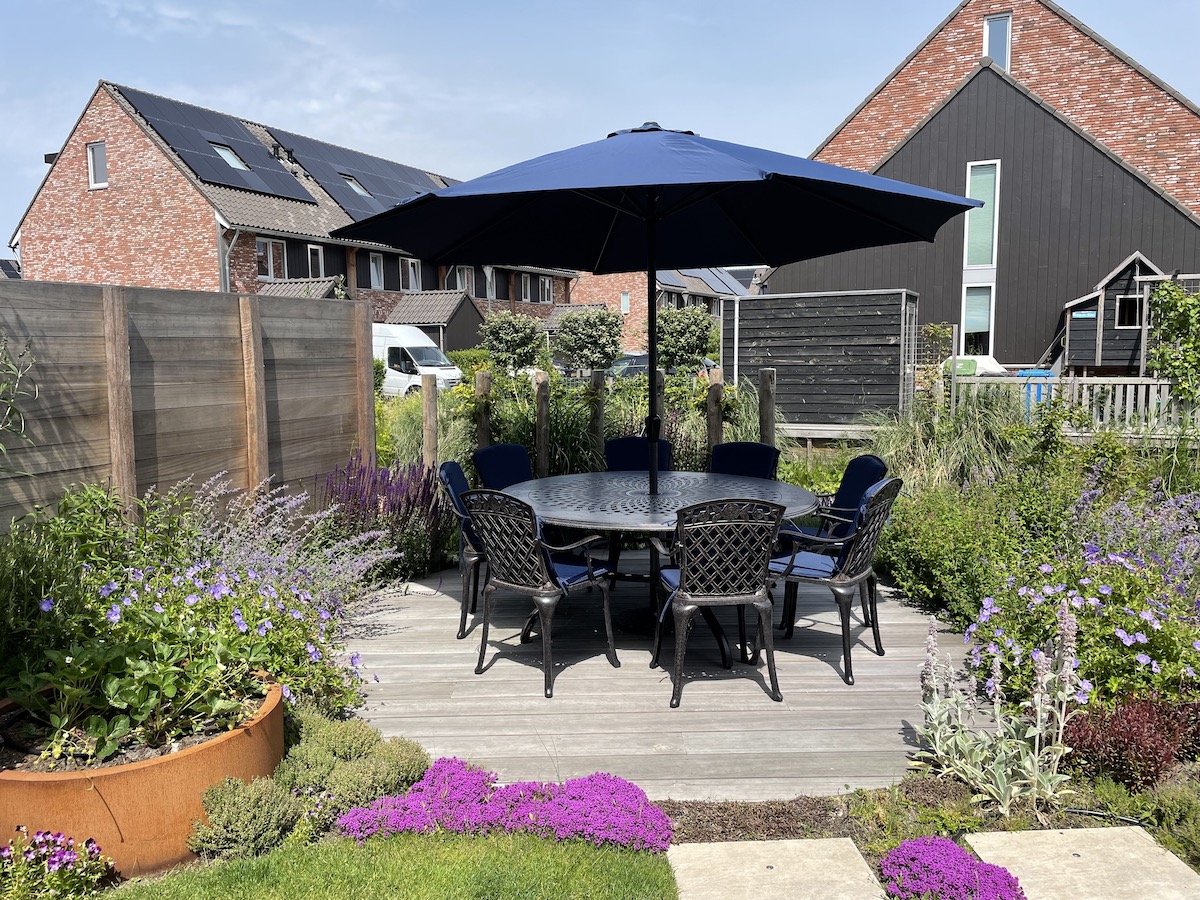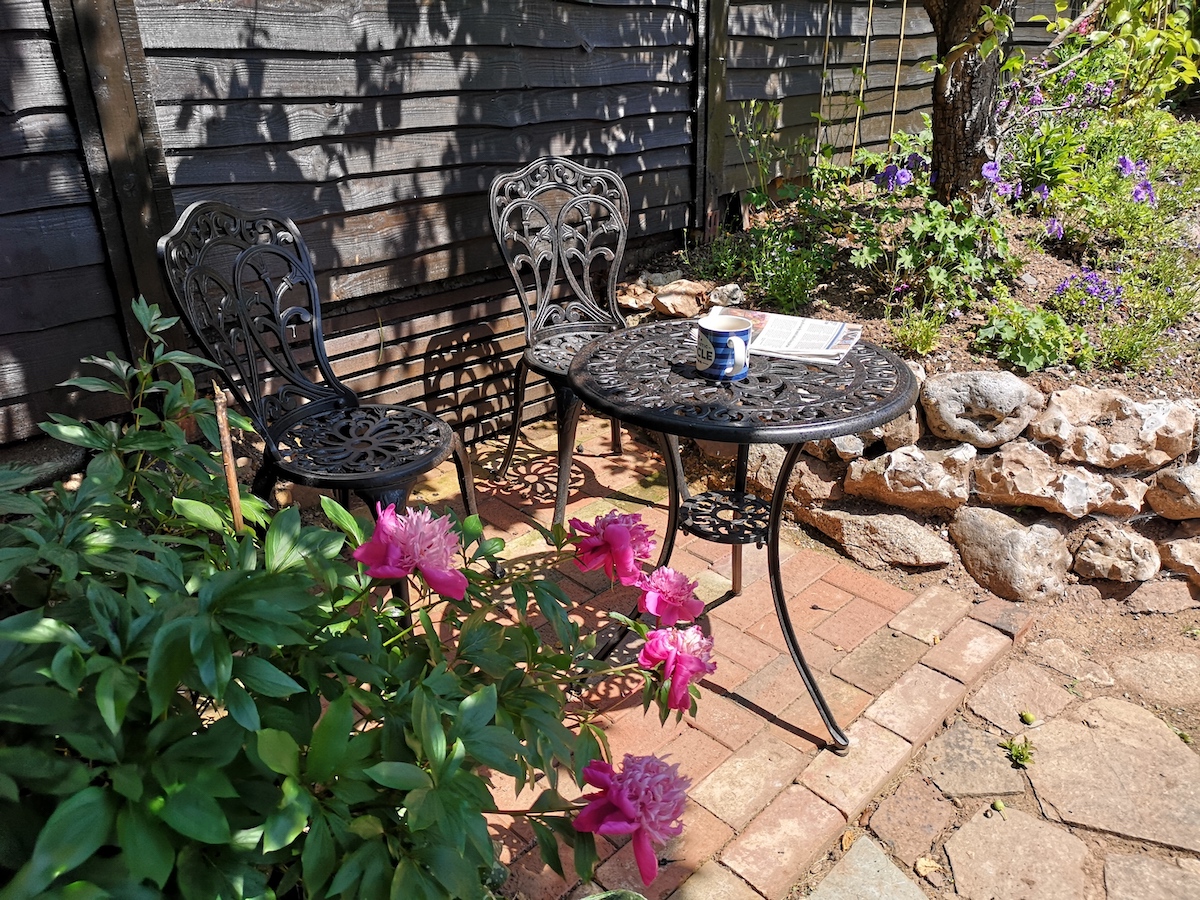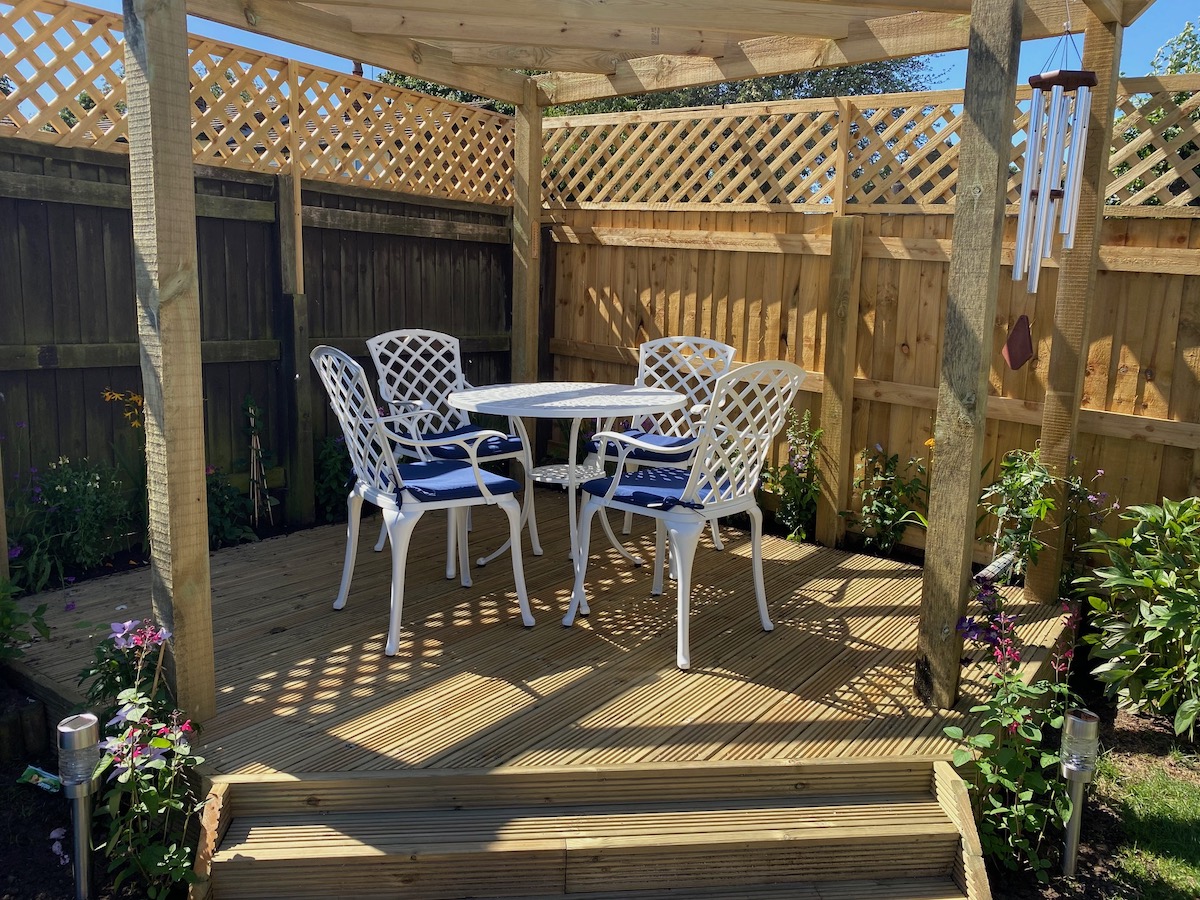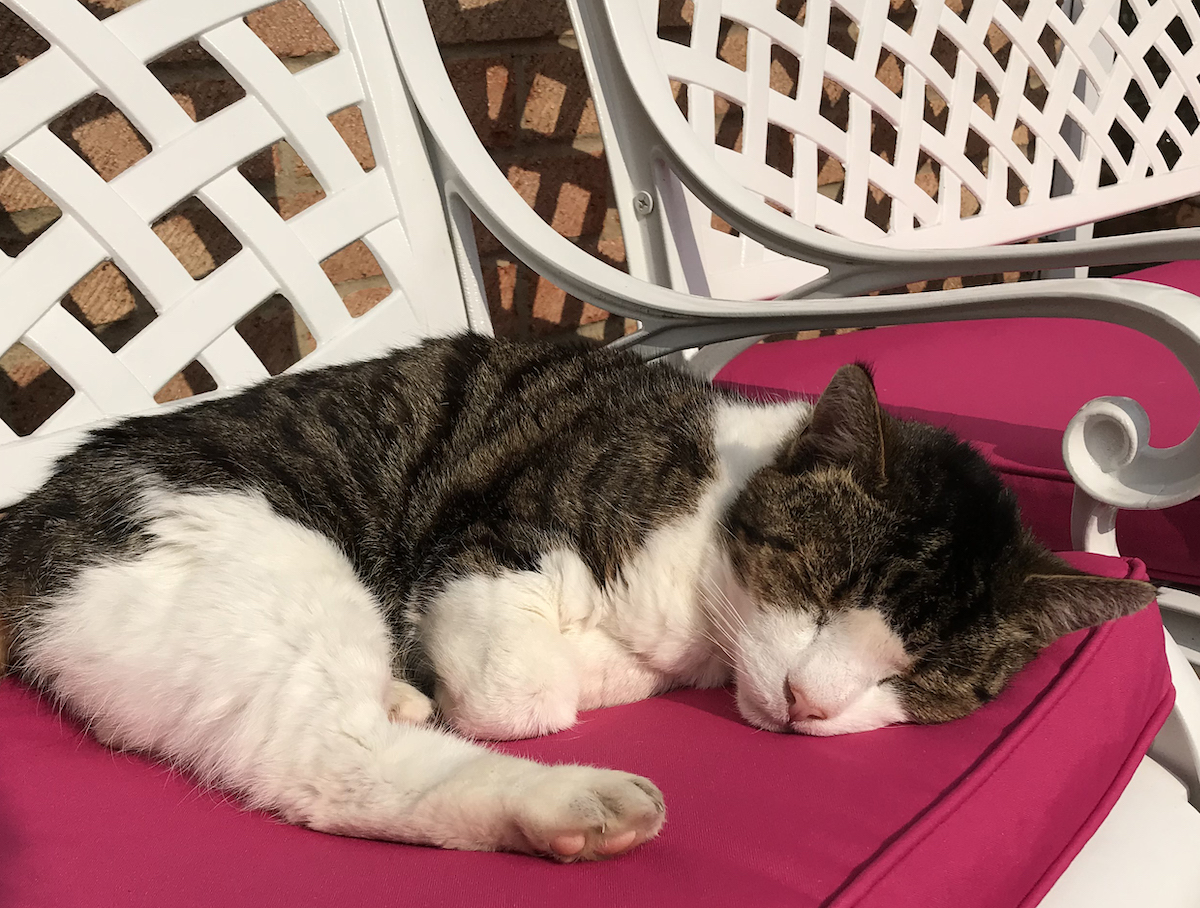There’s nothing better than sitting out in your garden, with flowers in full bloom, feeling the sun beaming down onto your skin as your cares drift away. After all the hardwork of planting, carving, pruning and maintaining your garden finding somewhere to sit and soak it all in is essential. Many garden designs get this part of creating a garden space wrong by creating seating areas that are too big for the garden, too small or even in the wrong place.
This garden seating guide will help you work out the best seating position in your garden - resulting in a perfectly positioned and proportioned space to sit back and relax!
Where to position the seating area in a garden?

The biggest mistake that homeowners and some designers make is to stick the seating area directly off the house. The traditional patio outside the kitchen or lounge patio doors comes to mind. The problem comes when this seating area is the only destination in a garden. Why travel around to view the plants, trees or water features when you can spill out of the house? Sometimes, this can be a wonderful seating area to view the garden. However, most of the time it just looks out onto a rectangular lawn and really limits the impact of the garden.
This approach limits the interest in the garden and treats it as an "admire at a distance" style garden. What works far better is inviting the guests to explore and immerse themselves in your garden.
Sometimes it is better to have a small ‘perch’ seating area out of the house, for a morning brew or a quick stop in the garden. Then focus the main seating area to be within the action area of the garden. Get the visitor to walk into the garden before being seated. Why not have a seating area surrounded or hugged by herbaceous perennials or under the cover of tree canopies or scented shrubs?
Choose a position that makes the best of the view. If the view from your house is lacklustre, then site the seating area elsewhere. If you have an incredible borrowed view of a landscape, it is far nicer to sit looking out at a view than wooden fences and lawns!
The balance of sun and shade

It is important that you consider both sun and shade. Whilst it sounds exotic to be baked in full sun all day, sitting in it can be bothering, uncomfortable and dangerous. Likewise sitting in the shade can be cold, off-putting and uncomfortable. A good balance is an area that gets a mix of sun and shade. Consider having easily moveable furniture so you can move in and out of the sun during the day.
Using a piece of paper, map out in spring and summer where the sun and shade lie at intervals throughout the day. This way, you can pick the best area for sitting that has a balanced mix of sun and shade. If you’re an early bird, you may want the morning sun, whereas night owls may choose a position that makes the most of the late evening sun.
How big should your garden seating area be?

This is the second issue that gardeners often get wrong. We seem to be obsessed with either going big or creating micro spaces. Both of which have design and functionality issues. The common mistake is to completely slab over parts of the garden for seating. Creating huge spaces ready to sit the entire family for that one BBQ in July. Then for the rest of the year, these car park-sized patios gather mould and dominate the landscape. As a rule of thumb, 1.5m2 per person is adequate when planning a seating space.
The next is the tiny patio or multiple small spaces for a seating area. Squeezed into the garden as an afterthought, these areas are uncomfortable and fail to get used, meaning they waste space and put people off from travelling around the garden. In small gardens, it is best to have one seating area that’s correctly proportioned than a few tiny ‘stops’ in the garden.
It’s better to plan the seating area size for the number of people using it frequently. If you have 16 people around for dinner in the summer, there’s no point in having a space for this amount if you only use it once a year. Simply grab some fold-out tables and chairs for this event. Then plan for how you will use it day in and day out.
How big is the garden furniture?

We’ve discussed how important proportions are when it comes to seating areas, and the same goes for furniture. Some furniture sets now are bigger than lounge sofas offering all sorts of benefits such as recliners, hidden storage, wide armrests etc. These are great if you have the space, but if you’re a bit pushed for space, bear in mind that squashing lots of large furniture into a garden can unbalance the overall design. Carefully consider which benefits or features you need in furniture.
Going back to the point about how many people will use it, in my experience as a designer, it’s best to have a few lovely comfortable pieces of furniture with enough breathing space between them than a crammed patio of giant cumbersome chairs or tables. You can always add more items of furniture if you need them, but storing excess pieces in garages, sheds or behind the bins can become a total pain.
It’s a good idea to always measure out the area before buying furniture, mark it out with chalk and stand back to check how it all fits. Consider space to pull chairs out from under tables and access for guests to get in and out. I once had a design client who skipped this step and bought some large furniture that would just about fit when they got it home, but you couldn’t pull the chairs out! There was no way for everyone to get in without climbing over the table!
Do a few things well, and the rest of the garden will thank you for your consideration. By choosing a few key pieces of furniture that fit, have adequate space around them and balance the overall size of the garden, you can create a wonderfully relaxing seating area.
About Lee

Lee Burkhill aka the Garden Ninja is a multi-award-winning garden designer, horticulturist, garden blogger, vlogger, TV Presenter and YouTuber. Hailing from the North West of England, Lee has an infectious enthusiasm for helping gardeners all over the world. The Garden Ninja is his garden design business and online gardening blog, and he was recently voted one of the Top 10 Gardening Bloggers and Garden Vloggers in the UK. Lee is also part of the BBC Garden Rescue Team, which you can watch on weekdays at 3.45 pm on BBC One or on BBC iPlayer. Here at Lazy Susan, we’re looking forward to sharing his exclusive horticultural tips, tricks and advice on our blog.



